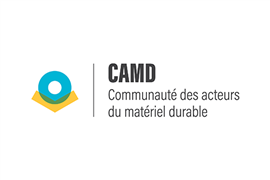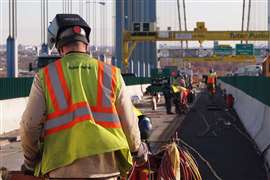Driving compliance - the concepts, components and systems available to OEMs
05 October 2009

Emissions compliance is driving OEMs to redesign construction equipment. Steve Skinner reports on some of the concepts, components and systems that will feature on post 2011 machines.
US Tier 4 Interim and European Stage IIIB emissions compliance will have a profound effect on construction equipment. As highlighted in the engines feature in the July/August edition of iC, much of the onus is falling on engine manufacturers, but many other component suppliers are also contributing.
Right across the components chain and especially regards electronics, controls and transmissions, performance gains can be found and efficiencies improved, which could have a positive impact for both OEMs and engine manufacturers.
One crucial area of development is in hybrid technology, an area that could yet enable OEMs to meet compliance without having to install after treatment systems to filter exhaust emissions.
Robert Mann, senior vice president of sales, service and marketing at Deutz told iC, "The first step is to try to avoid after treatment wherever possible. We're therefore trying to find internal solutions in the engine from the fuel system, mapping and electronic controls to negate the need for after treatment."
Hybrid
Mr Mann confirmed, "This inherently tends to push the development of hybrid technology. In many cases, this technology will enable a manufacturer to drop below the 56 kW threshold while maintaining performance. This means an OEM can potentially avoid fitting a combined after treatment system for Tier 4 Final compliance and can therefore benefit from a much better installation solution in the future."
Hybrid systems won't eliminate the need for machine redesign but they are an alternative that's been looked at by a number of engine manufacturers.
At Sauer Danfoss, sales quality and technical services director Rick Sporrer believes over 10000 different machines will need to be redesigned as a result of legislation. He said, "This is much more than an engine issue - machine design is taking a quantum leap in complexity right now."
Sauer Danfoss has developed a new range of products to serve as the building blocks of the new machine systems. These include the Plus+1 family of microcontrollers and related products such as electronically actuated H1 piston pumps and motors, and SGM and D series gear motors.
"Our emissions team has taken the time to both understand the impact of engine requirements and to investigate and develop products and systems that meet the performance needs of the future," said Mr Sporrer.
Transmission
Over the past 12 months ZF has implemented its drivetrain technology roadmap for wheeled loaders and material handling equipment. The three stage programme started with a product upgrade called the ‘efficiency package', which is already in production and offers a fuel consumption saving of up to +20% and increased productivity in the range of +40%.
Stage two involves the launch at Bauma of a hydrostatic-powersplit continuously variable transmission (CVT), offering even greater reductions in fuel consumption. The hardware is based on the company's Ergopower technology, but instead of a torque converter, a hydrostatic module has been employed.
The third and final step involves the development of hybrid versions of both Ergopower and CVT technologies, which the company expects to be in production in 2012.
Hermann Beck, vice president of construction machinery systems at ZF told iC, "Our customers do not buy gears, they buy a whole technology.
"Hybrid is clearly an area of interest for the future, although the initial cost is significant, with a full system costing up to € 25000 (US$ 36800). The battery alone costs in the region of € 9000 (US$ 13000)."
ZF has calculated the pay-back for construction machines will be within three years including the fuel savings. "If you add the possibility of downsizing the combustion engine to negate the need for exhaust after treatment, then the system becomes even more attractive," said Mr Beck.
Filter
While hybrid technology is being discussed, what is clear today is that emissions legislation has had a profound effect on the demand for Diesel Particulate Filters (DPF). Konrad Soergel, product manager for OEM Business at Huss Technologies told iC, "We've seen strong growth rates having started in the retrofit business."
Huss started supplying metal work such as silencers and exhaust pipes to OEMs in 2007. This was followed by ceramics last year after the company built a new production facility near Dresden in Germany. The ceramics facility currently produces 100000 filters each year, although this is set to increase as the result of a new production unit that's being installed at present.
"A lot of Tier 4 interim machines will use the Exhaust Gas Recirculation (EGR) with DPF route to compliance, so a large market has been created as a result of the legislation," said Mr Soergel.
Huss uses a special silicon carbide (SiC) for its DPFs to ensure thermal resistance and durability. Mr Soergel told iC, "Huss uses liquid phased sintering (LPS), which takes place at considerably lower temperature than conventional SiC processes. It also features a special binder phase, which offers excellent cohesiveness and cost effective production.
"Our competitors use R-SiC (re-crystallised), Si-SiC, Cordierite or metal substrate as filter material, none of which are as robust, thermally resistant or as durable as our ceramics."
Huss can supply just the ceramics to engine manufacturers, or when a regeneration strategy is known, the complete system.
"We have sensors fitted to our DPFs, which work as control units and sound an alarm when white ash (residue left from burnt oil) has built up to the extent it needs high pressure cleaning," said Mr Soergel. "We anticipate this will be quite seldom and in the order of between 500 and 800 hours of operation depending on the regeneration method."
Mr Soergel believes all OEMs are thinking very carefully about their strategies for compliance at the moment and he is confident that Tier 4 Final compliance will involve a combination of DeNOx and DPF.
"We are working on a deNOx system at the moment, and our idea is to become a supplier of both deNOx and DPF systems to support OEMs in achieving Tier 4 Final compliance," he told iC.






